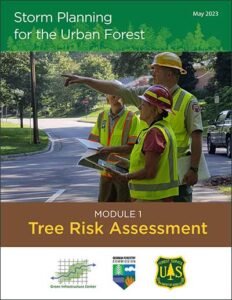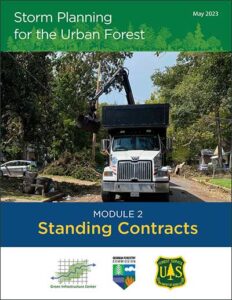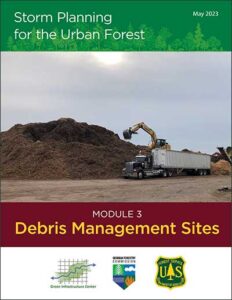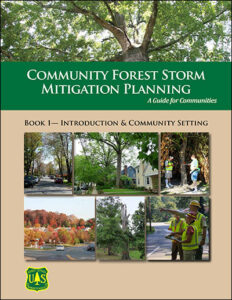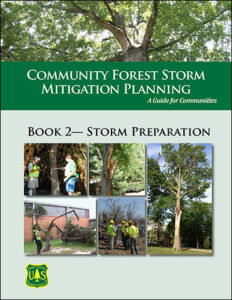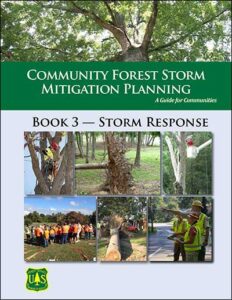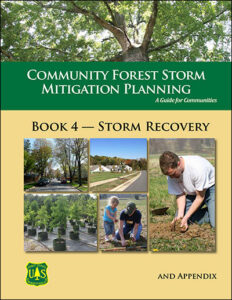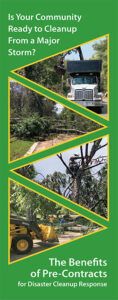A Community Forest Storm Mitigation Plan is an essential part of a community’s hazard mitigation and emergency management plans and systems.
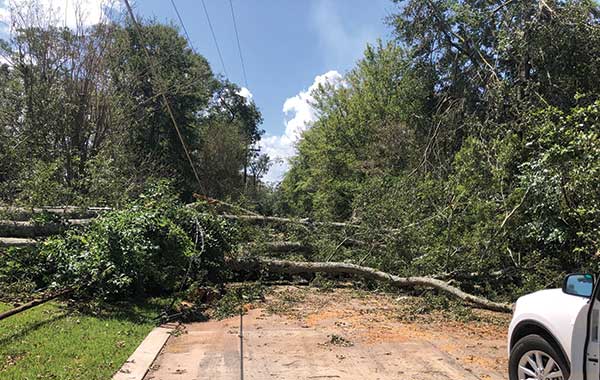
Get Ready, Respond and Recover
Storm Mitigation Planning For Your Community Forest
A Community Forest Storm Mitigation Plan can be made part of the community’s existing emergency plan or can be a standalone plan. Such a plan should focus specifically on ways to avoid or mitigate the damage trees may cause during a storm or other catastrophic event.
After a large event, which may result in a major federal disaster declaration, debris hauling and monitoring represent an enormous cost to impacted communities. There were six-times more billion-dollar severe storms during 2001–2022 (142 events) than prior 2 decades (25 events/1980–2000) so storms are increasing in events as well as in the amount of damages they cause. If a community isn’t ready, then response and recovery will be much slower and less effective, not to mention more damaging and more costly. If FEMA rules are not followed, the community may not be able to be reimbursed for their costs. Following are GIC’s tools to get ready for storms and a link for more training resources. These resources were created with support from the USDA Forest Service.
Is Your Community Ready for a Major Storm?
1. Tree Risk Assessment
Get ready for storms by first identifying and treating risky trees and limbs to reduce storm damages and tree failure later.
Get Module 1: Tree Risk Assessment
2. Standing Contracts
Prepare advance or standing contracts to ensure you have the most qualified professionals to help you during a disaster and ensure faster cleanup:
Get Module 2: Standing Contracts
3. Debris Management Sites
Be ready to manage the significant debris from a storm so that roads and emergency services can be cleared and ready to function faster.
Get Module 3: Debris Management Sites
Ready to Create a Complete Plan?
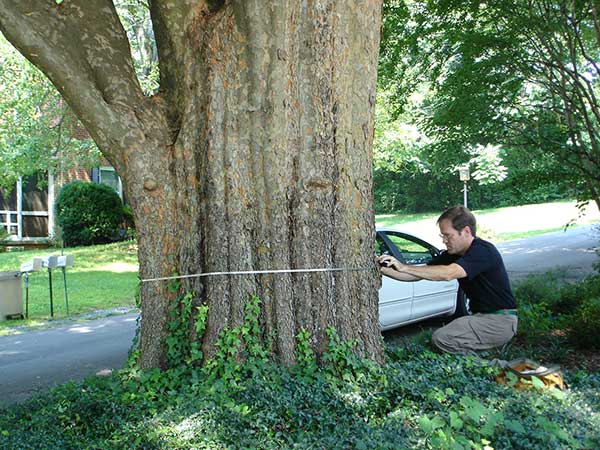
Use the chapters of the Planning Workbook to prepare your community. Be sure to engage staff from your office of Emergency Preparedness, your urban forester and parks, planning and public works staff. The Community Forest Storm Mitigation Planning Workbooks (see below) and the accompanying Community Forest Storm Mitigation Planning Template (see below) can help your community assess forest storm readiness; mitigate tree risk and reduce tree-related storm damage; and develop a forest storm mitigation plan.
The workbooks guide you through how to fill in the template, which serves as a basic framework for developing a Community Forest Storm Mitigation Plan. As the template is filled in, gaps in storm readiness, tree risk mitigation and community forest management are identified. As these gaps are addressed, the plan should be revised and updated. Communities may also find it helpful to work with their neighboring localities to develop similar plans and include agreements to share resources. The planning workbook also provides helpful tips on how to structure a disaster readiness plan, so that it is in compliance when applying for federal assistance for clean-up and recovery costs. Thanks to the Georgia Forestry Commission and Virginia Department of Forestry for creating this original workbook which GIC has updated with recent FEMA requirements.
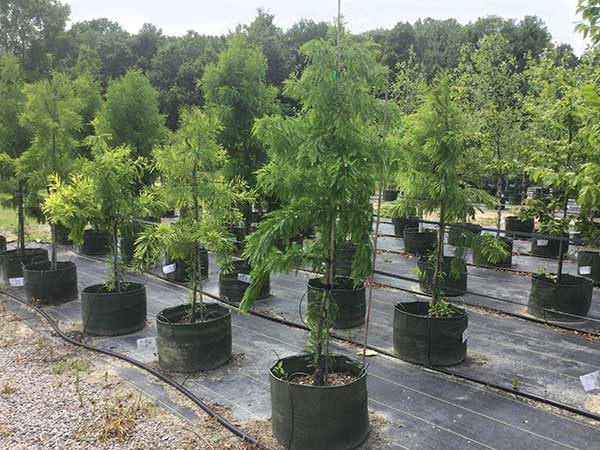
The Forest Storm Mitigation Planning workbook is broken into four Books, covering:
Community setting:
Every community is unique, from its setting to its structure and governance. Understanding and documenting what may happen will give communities the edge needed to mitigate risks and aid recovery.
Storm preparation:
Advance preparation is critical to reduce the impacts from a particular storm or event. Storm preparation involves key elements, such as:
—resource assessment
—mitigation mapping
—assessing tree risk
—creating an inventory of equipment
—establishing advanced readiness contracts and memoranda
—a communications plan to facilitate storm response and recovery
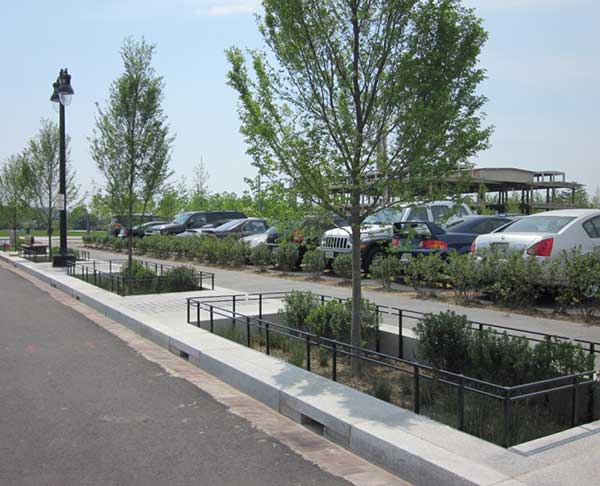
Storm response:
The most critical time for storm response occurs during a particular event. Knowing how to mobilize resources, designating staging areas, having protocols in place for damage assessments, and accurate record keeping will help a community respond efficiently and effectively. Also, advance understanding of how to get reimbursed for storm damage can ease the financial burden for communities post-disaster.
Storm recovery:
After the immediacy of response comes the long haul of recovery. Communities begin the process of understanding the losses to their forests; assessing their inventory of potential replanting sites; and adding trees back to the landscape through partnerships. The ongoing work of risk management is never done, but can be organized in way that works for communities affected.
Community Forest Storm Mitigation Planning— A Guide for Communities
Download The Community Forest Storm Mitigation Planning Template–a pdf fillable form.
Additional Resources—
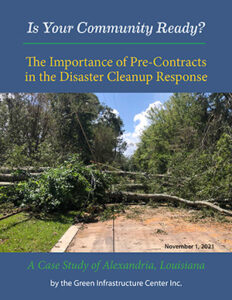
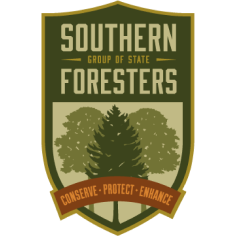 To access even more training tools visit:
To access even more training tools visit:Community Forestry Academyhttps://communityforestry.academy/courses/community-planning-for-the-urban-forest-strike-team/
Also check out our Resources page to see our many planning books authored by GIC!
To Learn More Contact:
Matt Lee, Senior Forester, GIC inc.
434-286-3119
Send Matt an email
